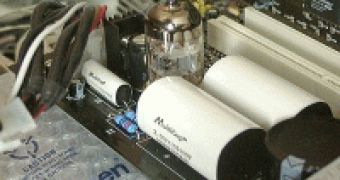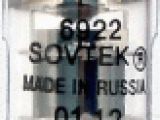First I thought of choosing a title for this article that sounded something like "it's tubes time again" but that would have been slightly incorrect as I reckon more and more tubes never went away anyway. Tubes may have "slept" but they were never dead, forgotten but never abandoned - they simply were here and we more or less have taken notice of them. From the 70's and until these last years the tubes have been looked at as something belonging strictly to the past history of technology and those who were still using gear based on vacuum tubes were mere nostalgic people, unable to depart their "olden" world of even older tech. Well, well, well, things seem to have a different trajectory lately as the valves are making a comeback (again, not that they had left for somewhere) stronger than any product or generic piece of technology we've had at hand. People have simply realized that the warmth a tube gives to the sound in amps cannot be achieved at a more decent price - the solid-state and digital technology we have yet can't make the sound-processing units so small, convenient and easy to use for everybody so they equal (let alone surpass) the capabilities and generic use of the vacuum tube.
So, what was to be done? Guitar and bass amps, as well as tube microphone pre-amps were back on the market with a huge success and all the tube-based gear was selling awesomely: no more "old-people stuff" - now it had become "true vintage classy sound". Even tube microphones came out! It was clearly time for something odd... but the delay was short: the first vacuum tube-amped soundcard for a PC! Sounds insane, but they did it! AOpen have put together the first tube-amped soundcard-equipped motherboard ever!
Apart from that, there's nothing that special about it: it's as "motherboard" as it can possibly be, unless its final amp stage runs on a Sovtek 6922 valve. For those who don't know (and unless you're passionate guitar-lovers or sound technicians it's most likely you don't) Sovtek Russian valves have been long time used in both pro and audiophile gear, from amping home/studio sound devices and up to enforcing guitar amplifiers and the likes. "Why a tube?" could someone ask and those who have ever used tube-based gear will hurry to answer enumerating the exceptional advantages of vacuum tubes when it comes to sound.
First of all, there's the world-renowned and spoken of "warmth" of the sound: tubes, despite the overall higher level of distortion at higher volumes (after all, that's why the coolest overdrive sounds for rock guitars are obtained from tubes) are capable of putting out a much denser audio signal. It comprises a whole lot more harmonics as far as 3 octaves away from the base-sound and this results in a completely specific, warm and fat audio. Once you get to listen to good audio media on a good tube-loaded device you'll be able to tell the difference between it and digital or solid-state amped sound on the fly.
The AOpen project was though stopped out of rather unknown reasons; fact is the audio codec used for the tube-soundcard wasn't by far the best choice for such a job and it matched its purpose only partially. Reportedly, the final sound was different, but not that much as I or other people expected. Again, since tubes work at high voltages and get really-really hot (they actually get to glow in a red-orange eerie light sometimes) there was the issue of the heat inside the PC case...
The system was nevertheless well-built and benefited from very high-quality parts: The sound subsystem of the motherboard consists of: ELNA capacitors in the power circuitry of the tube, CARDAS copper cables between the amplifier and connectors, REL MultiCap capacitors in the sound section and VISHAY resistors. Seems like they all together haven't had much luck and the whole system (very interesting thing, you'll agree) has eventually come to a halt then came back to the PC-era traditional soundcards.
This project nevertheless has proved that there is still much work to be done and a lot of field to be researched until the digital chip could ever dream of competing shoulder-to-shoulder with the vacuum tube-based amplification. So far, the best attempts have been made with the help of emulation but this is scarcely enough when compared to the "fat".

 14 DAY TRIAL //
14 DAY TRIAL // 


